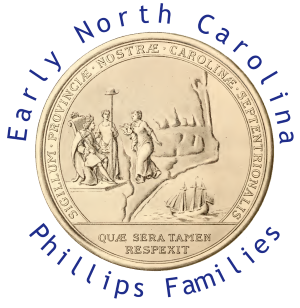Croatoan Island
From ENC Phillips Group Wiki
Template:Unreferenced Croatoan Island is the name used by 1585-1587 Roanoke Colony settlers for Hatteras Island or an island near Cape Hatteras, North Carolina, USA. It is speculated that the Roanoke colonists might have fled there. Reasons given for this include the colonists' friendship with Manteo, a native of Croatoan Island, and a carving of the word "C-R-O-A-T-O-A-N" into a post of the fort (and "C-R-O" into a nearby tree), ostensibly to let John White know where they had fled when he returned in 1590. White was unable to search Croatoan Island because a hurricane hit the outer banks of North Carolina and blew his fleet to sea. After the storm abated, the fleet was low on provisions and their ship's anchor had been lost so they decided to return to England.
Upon returning to England, White was never able to raise sufficient funds or provisions to return to America again. In 1709, English explorer John Lawson visited the Hatteras Indians, descendants of the Croatoan Indian tribe. Lawson had written a book where he described several of their ancestors were white people with light eyes and could "talk in a book as we do". In the 1880s, Hamilton MacMillan of North Carolina suggested another theory; he lived near Pembroke, home of the Lumbee Indians, who claimed their ancestors came from "Roanoke in Virginia". According to MacMillan, the Pembroke Indians could speak English and many of them had the same last names of the initial colonists. MacMillan's findings were published in an 1888 pamphlet.
Many historians now lend credence to yet another theory: After White departed, the colonists split into two factions with one faction moving into Chesapeake Bay to live in the southern side of the bay with the friendly Chesapeake Indians. Threatened by the presence of white men, Chief Powhatan (it is unclear whether or not Powhatan was from a neighboring tribe of the Chesapeake) claimed to have killed most of the colonists, offering proof to White in the form of objects the colonists possessed. Some scholars believe the remaining faction was assimilated into the tribe of Indians.
Croatoan has become an emblem of an intentional return to a more primitive, or more free, way of life. In this sense, the phrase "Gone to Croatoan" has been used by Hakim Bey and, more generally, primitivists. A variation on this phrase, "Gone to Croatan," was the title of a collection of essays which explored the theme of "dropping out" of civilization and "returning to" the wilderness, which was edited by Ron Sakolsky and James Koehnline.
Media appearances
Harlan Ellison references Croatoan in his 1975 story of the same name "Croatoan."
The word also appears at the end of the music video for the song "Jars," by the rock group Chevelle. "Croatoan" is written on a piece of paper tied to a brick, which the main character of the video discovers just before the car he is in explodes.
In two Supernatural (TV series) episodes the word Croatoan is used to describe a virus that turns humans into zombie-like demons.
In the graphic novel "100 Bullets" by Brian Azzarello, CROATOAN is the activation word to bring members of a hit squad back to their previous frame of consciousness before they were brainwashed. The book also goes on to explain that the ancient members of the same hit squad were responsible for killing everyone on Roanoke island. And the mark they left behind so the high ranking members of government around the world would know it was them was CROATOAN.
Also used in the movie Mindhunters.
In the miniseries Storm of the Century written by Stephen King, in a dream, the townspeople see themselves walking into the sea two-by-two with the word Croatoan carved on their heads.
